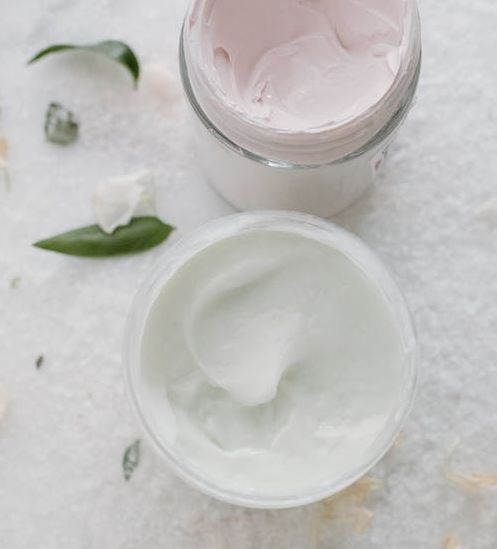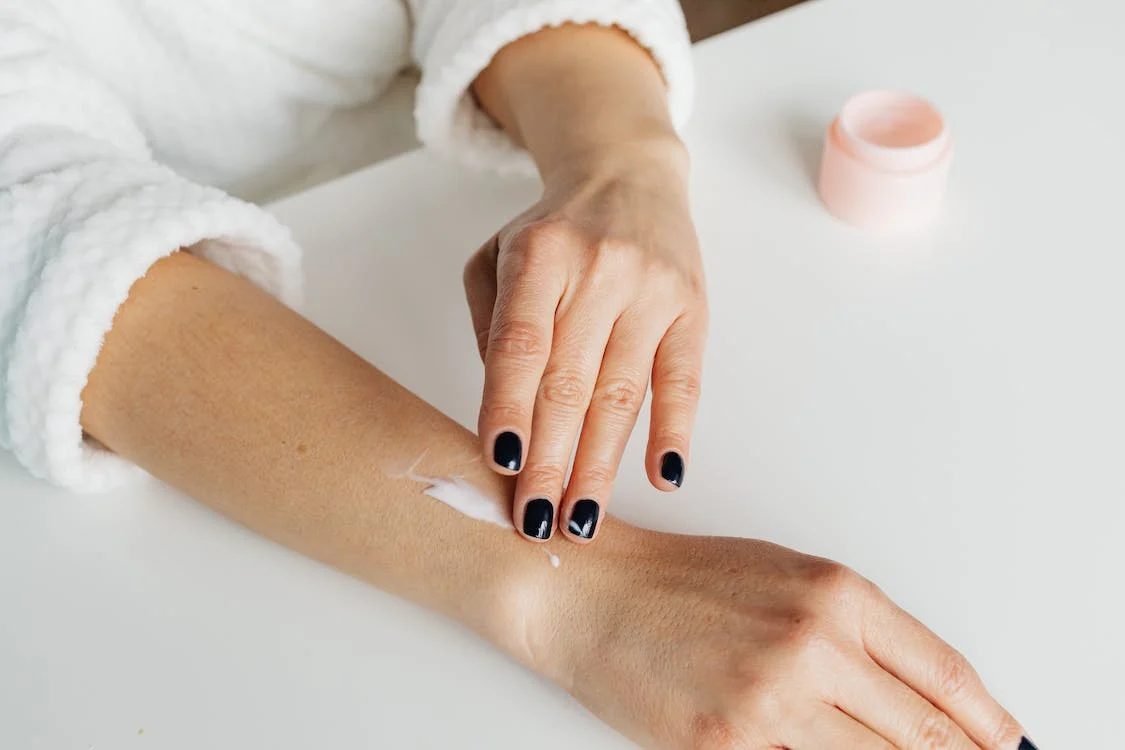Keeping your skin moisturized is crucial for all skin types and for maintaining excellent skin health, regardless of whether you have oily, combination, normal, or dry skin, you need moisturizers. Moisturizers keep skin moist and smooth. They are available in creams, lotions, serums, and oils forms.
For very dry, cracked, or injured skin, an emollient is an absolute must. Because of their ability to lock water into the skin and provide a barrier against irritation, they are often used in skin moisturizers.
To begin, let’s define an emollient and how it is used in beauty products.
What Is An Emollient?
An emollient is a treatment for dry skin that helps seal moisture into the skin cells by using an occlusive agent, like oils or lipids, that traps water. Many moisturizers include this skin care ingredient, which helps to hydrate the skin and reduce the appearance of fine lines and wrinkles. [1]
Certain cleansers and moisturizers include emollients, which help the skin retain its suppleness, smoothness, and elasticity. They are lubricating substances that are retained in the epidermis’ outermost layer, the stratum corneum. Emollients are believed to fill in the gaps between corneocytes, or proteins, that are desquamating, or shedding. [2]
Emollients are often used to alleviate the symptoms of psoriasis, contact dermatitis, eczema, and other skin conditions that cause extreme itching.
How Emollients Work
Emollients work by forming a thin hydrophobic film on the skin’s surface, which acts as a barrier against moisture loss by repelling water. This is different from the action of humectants, which draw moisture to the skin by attracting water vapor. [3]
Emollients are made of lipids, which are made of fatty acids that don’t dissolve in water, retaining any water-based products applied underneath them. Additionally, an emollient fills the gaps in your dry skin, creating a barrier that prevents additional irritants from entering the pores, thereby protecting the skin from environmental harm and keeping it smooth. [4]
Types Of Emollients
Emollients are often categorized according to their oily or greasy nature. The degree to which an emollient act as an occlusive agent is proportional to the quantity of oil contained within it. When you put a moisturizer on your skin, the more oil it has, the better it protects your skin and keeps moisture in.
These are the types of emollients:
Creams
Creams contain the right proportions of both oil and water. Because of this, they are simple to apply to the skin, but they do not provide the same level of hydration as an ointment would. They contain enough oil to keep water in your skin, but are less oily and messy. They are more convenient to use throughout the day than ointments since they weigh less and require less effort to apply.
They are more suited for evening usage than lotions since they are richer and heavier in moisture. When compared to ointments, cream emollients are absorbed more rapidly by the skin and so need more frequent reapplication.
Ointments
Ointments consist primarily of oil and are extremely greasy. They are thick, which keeps your skin from losing water, and since they aren’t absorbed rapidly, they don’t need to be reapplied often.
Ointments are the finest emollients for very dry or thick skin since they are so hydrating. Because they are messy and can stain your clothes, many people only use them at night while they sleep. Most ointments do not contain preservatives, so they are less likely to cause a skin reaction. You shouldn’t put them on skin that’s bleeding.
Lotions
The majority of a lotion’s composition is water, with just a trace of oil present. Out of the other kinds of emollients, they are the one that provides the least amount of moisture. Because they come in liquid form, it is simple to apply them to any other parts of your body that have hair on them.
Sprays
Sprays are light and only have a small amount of oil in them. Sprays are convenient because they may be applied to areas of the body that are hard to reach.
Leave-On Emollients
There are several leave-on emollients available, ranging in greasiness from highly greasy to less greasy. Your preference and how dry your skin is will determine which emollient to use. Emollients may also need to be changed based on the season. For instance, if you have drier skin in the winter, you could find that switching to an oilier emollient is beneficial.
How much leave-on emollient you need depends on your body size, the state of your skin, and whether or not you want to use the product as a soap substitute.
Soap Substitutes
These are also referred to as wash-off emollients. Soap substitutes are preferable to regular soap for those with dry, irritated, or sensitive skin. Both aqueous cream and emulsifying ointment are often used as alternatives to soap.
Oils
Some pure oils, such as shea butter, coconut oil, or marula oil, contain no water at all and are popular skincare routine additions because they trap other moisturizing products on the top layer of the skin. Furthermore, they are simple to apply to larger parts of the body.
Although these emollients are sometimes sold as a bath or body oil, many brands also provide the pure oil, which can be used to massage into your face after you’ve finished your other skincare routines.
How to Apply Emollients
Lotions, mists, balms, and ointments containing emollients should be administered directly to the skin. They should be softly stroked into the skin, not rubbed, in the same direction as your hair grows. This prevents hair follicles from becoming clogged. When your skin feels dry or tight, you can use them to put back the moisture that has been lost.
Soap substitutes may be used for handwashing, showering, and bathing. They clean the skin just as well but do not produce the same amount of foam as regular soap. If your skin irritates after using an emollient cleanse and remains irritated after rinsing, consult a pharmacist for advice on an alternative product. [4]
Emollients work best when applied regularly and in sufficient amounts. Two to four applications each day is recommended. Consistent and frequent application of the emollient may help keep your skin hydrated and avoid a recurrence of the flare during seasons of the year or with a skin condition when you know your skin becomes dry. [5]
What Benefits Do Emollients Offer?
Emollients are crucial for maintaining the protective barrier of your skin and keeping it moisturized. They can enhance the appearance of your skin by reducing fine creases and preventing flaking.
Dermatologists frequently recommend daily use of moisturizers. However, certain skin conditions, such as eczema, atopic dermatitis, and psoriasis, can benefit greatly from emollients in moisturizers. Emollients may also help people with diabetes, hyperthyroidism, and kidney problems. These conditions may cause your skin to become dry. Emollients aid in the restoration of moisture and the protection of the skin from external irritants.
Emollients are also common ingredients in burn treatments and diaper rash ointments. [6]
Risks and Adverse Effects
Emollients come in a variety of forms, and they are often combined with other components in skin care products. Although topical application of an emollient is generally considered safe, it is possible to experience adverse effects such as irritation, itching, and tingling. If you see any of these negative effects, discontinue use immediately.
To Wrap Up
Skin that is dry, cracked, and flaky might benefit from the use of emollients. They may be applied as sprays, lotions, creams, or ointments. Selecting the proper emollient type is essential for preventing irritation and sustaining the protective barrier of the skin.
When used in sufficient quantity and with sufficient regularity, emollients provide the finest possible results. You may be astonished at how quickly the hydration returns and your dry, irritated skin becomes supple and smooth once more.
References
- MasterClass, (7, April 2022) Emollients in Skincare: How Emollients Work
- Brannon, H., (17, April 2020) How to Heal Dry Skin With Emollients, verywellhealth
- Ruggeri, C., (31, August 2022) What Is an Emollient and How Does It Benefit Your Skin?
- https://www.nhs.uk/conditions/emollients/, (14, September 2020)
- Healthline Editorial Team (2018, September 29) What’s the Best Way to Use an Emollient?
- Sikorska, J., (12 January 2023) Sorbitol (E420) – Use in Food Industry, Cosmetics and Medicine



